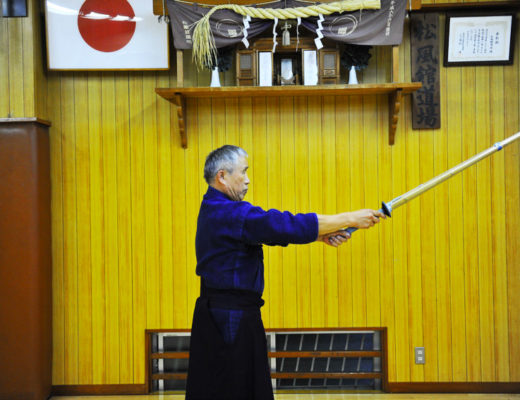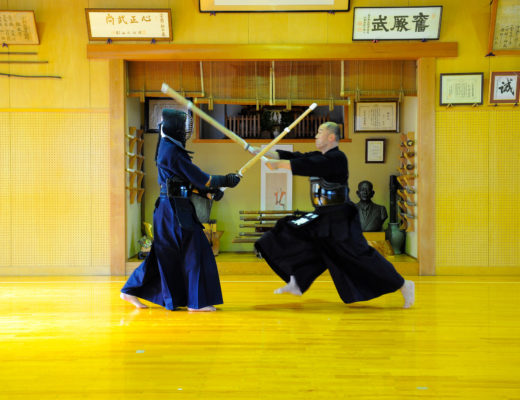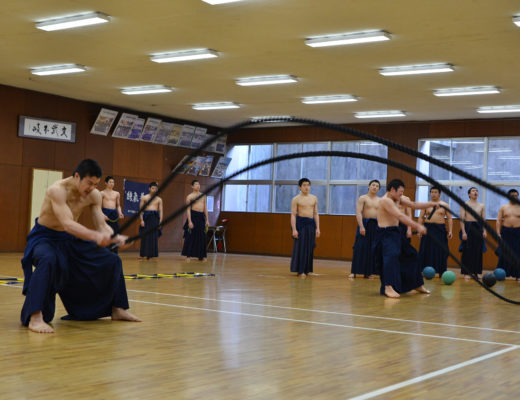2020.8 KENDOJIDAI
Footwork is the core of Kendo. It is said that Kendo is 40% Shinai handling and 60% footwork, or even 30% Shinai handling and 70% footwork. How long will the restraint on Keiko continue? In this situation, let’s commit ourselves to solo footwork practice. Solo footwork Keiko by the top-ranked swordsmen is now available to the public.
Utilising the 4 types of footwork
Ayumi-, Okuri-, Tsugi-, and Hiraki-ashi. These are the four types of footwork in Kendo. Although we do Keiko mainly focusing on Okuri-ashi, the other three footwork techniques are also important, and by learning them it is possible to expand the scope of your Kendo.
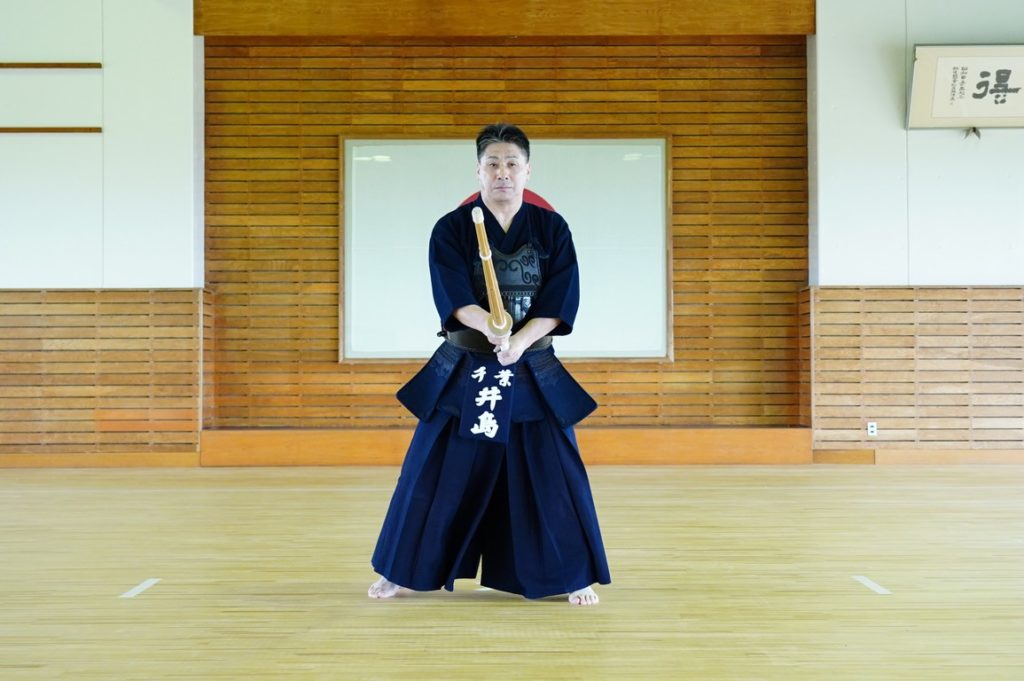
Ijima Akira, Kyoshi 8th Dan
Born 1957 in Akita prefecture. Advanced to Nippon Sport Science University from Honjo High School and worked there as a teacher’s assistant, then moved to International Budo University and became coach for both ladies and men at the International Budo University Kendo Club. Currently, Ijima Sensei is a university professor and the general director of the Kendo Club. Participated in the Prince Tomohito of Mikasa 8th Dan Tournament, National Teachers Championship, All Japan East West tournament etc.
If you can utilize the 4 types of footwork at your will, your Kendo will have more depth
Okuri-ashi
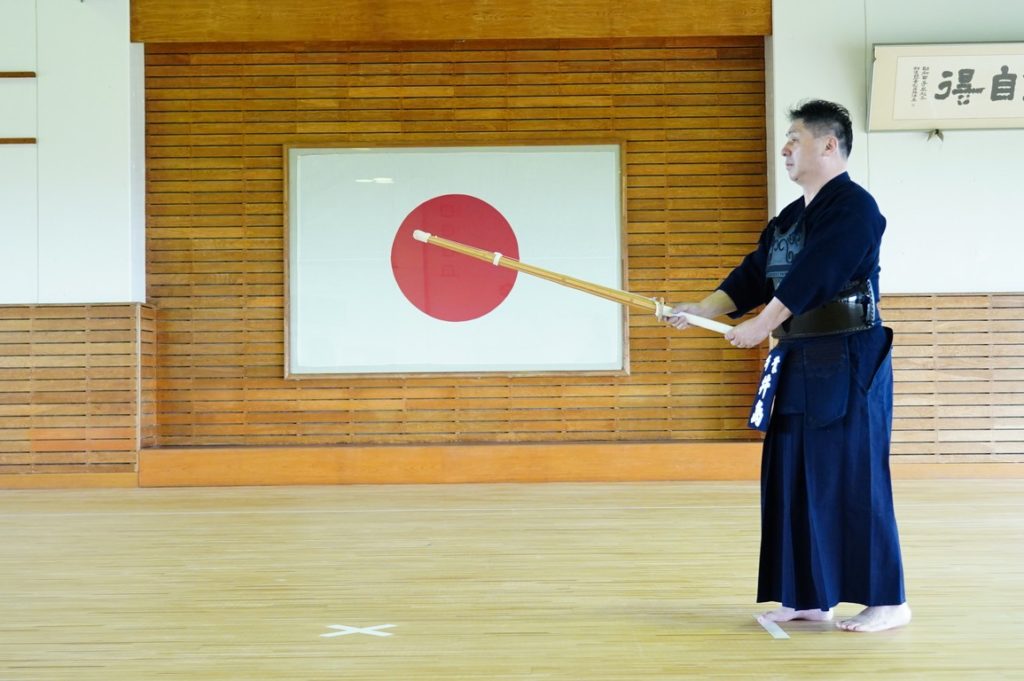
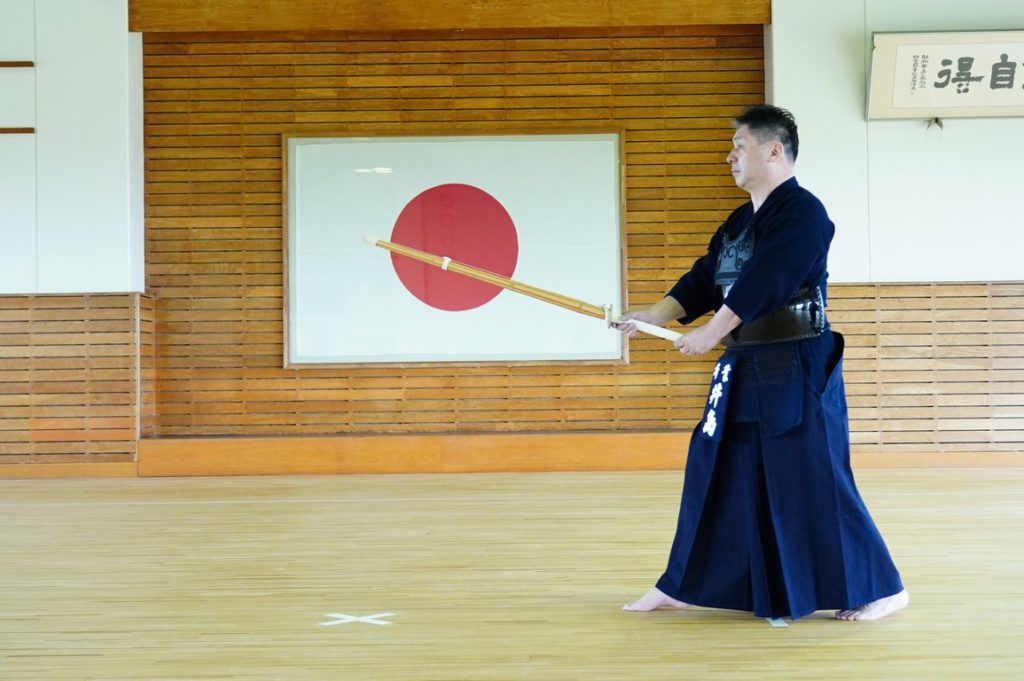
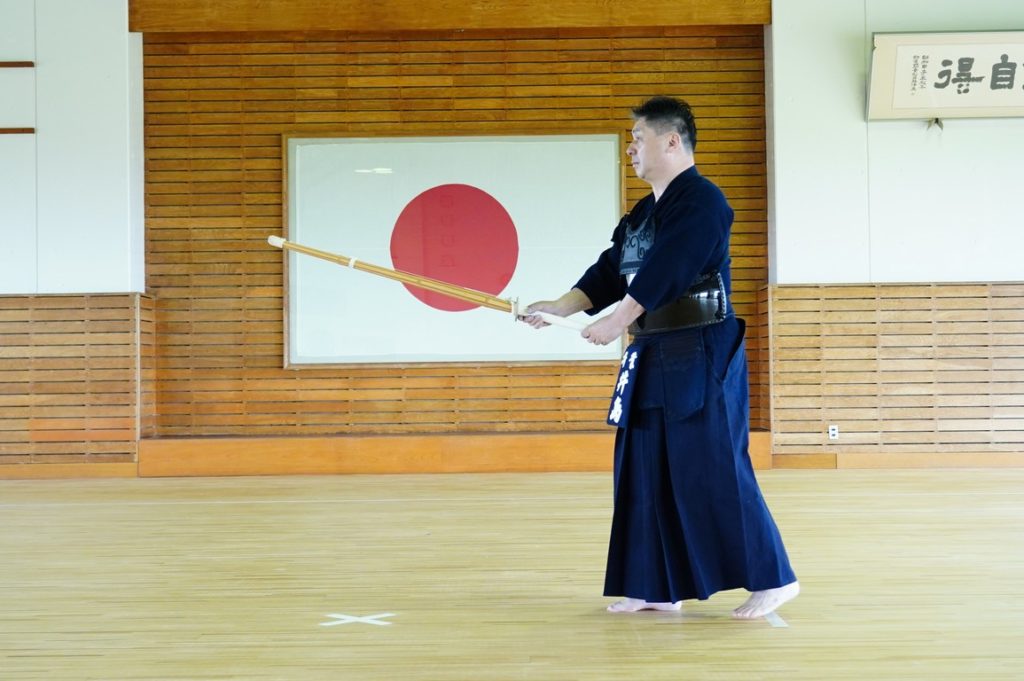
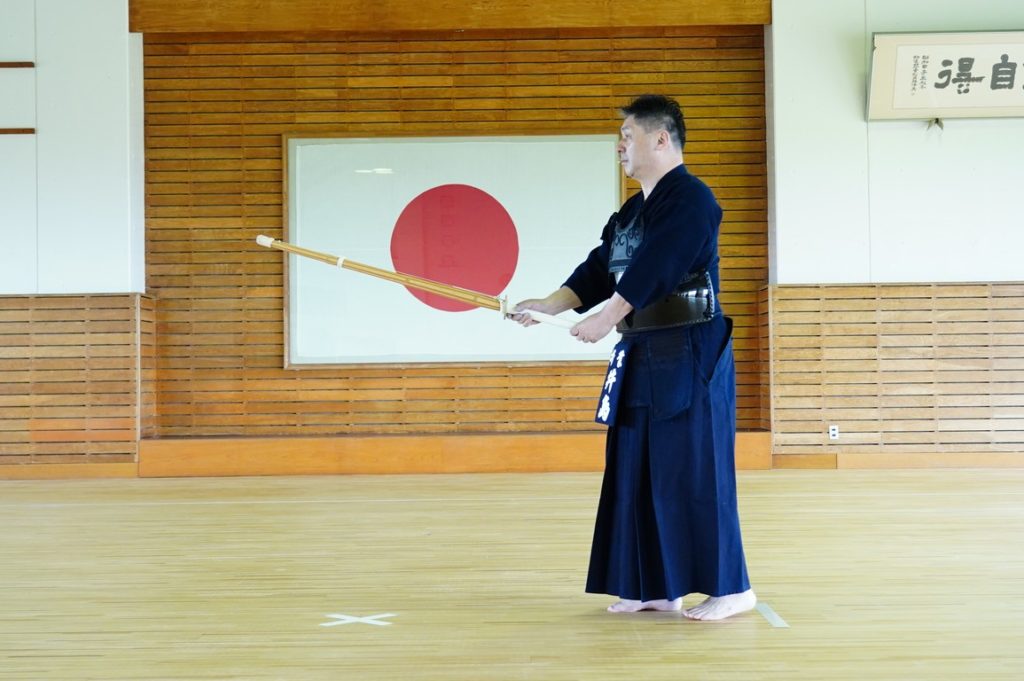
Ayumi-ashi
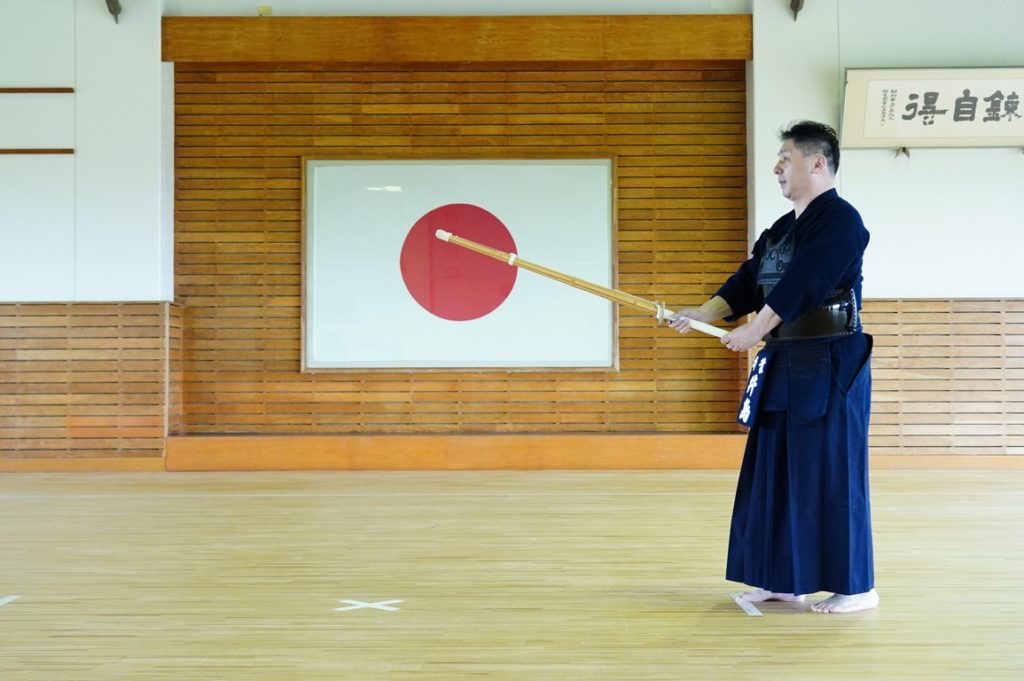
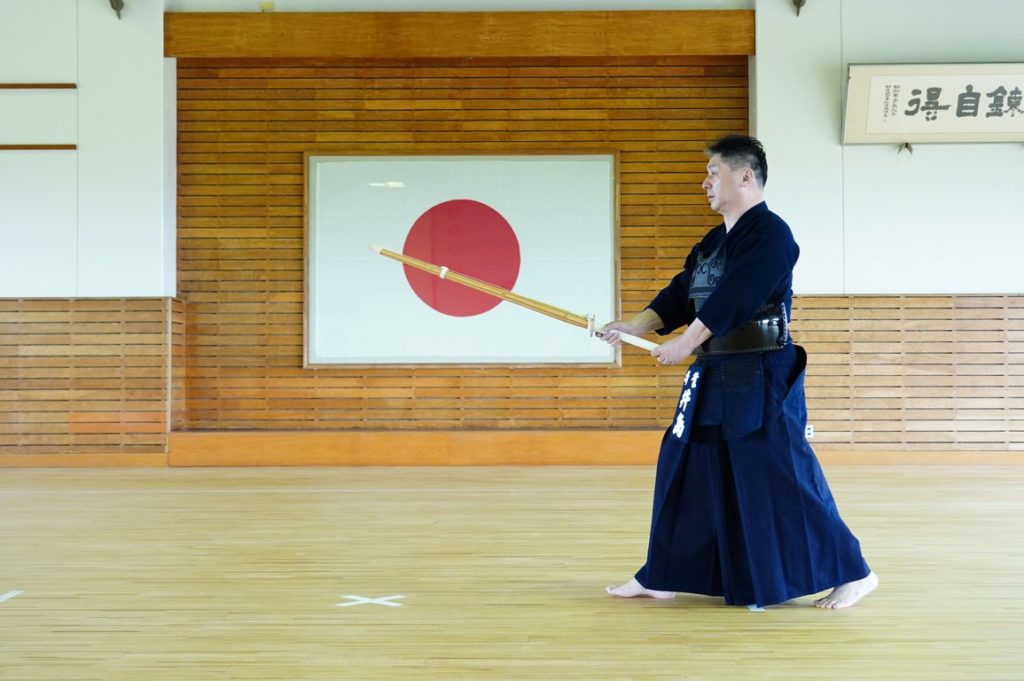
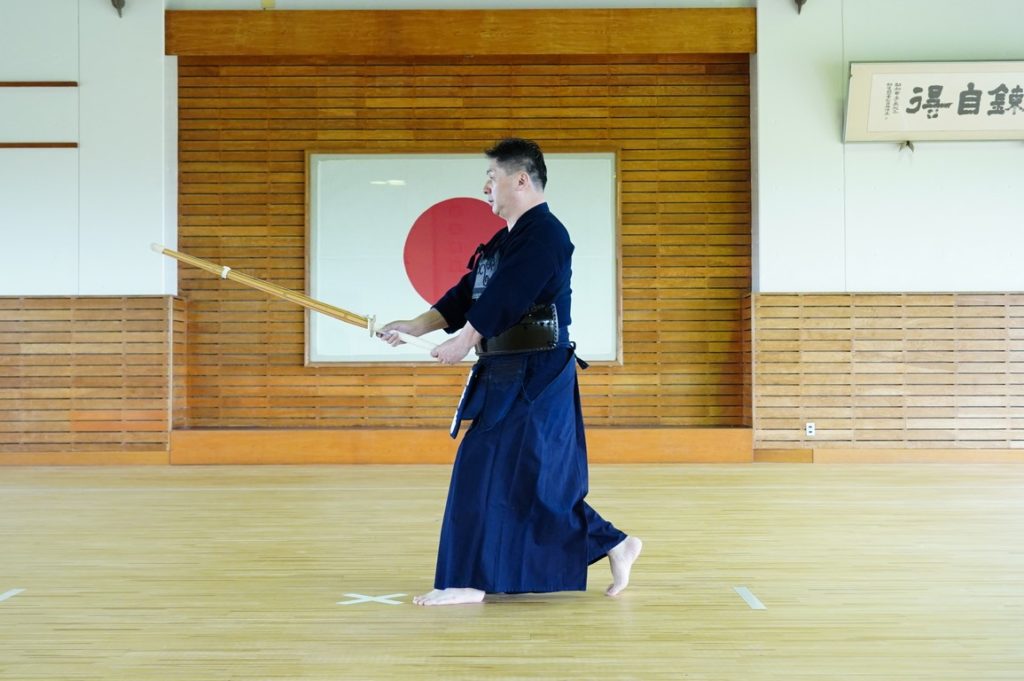
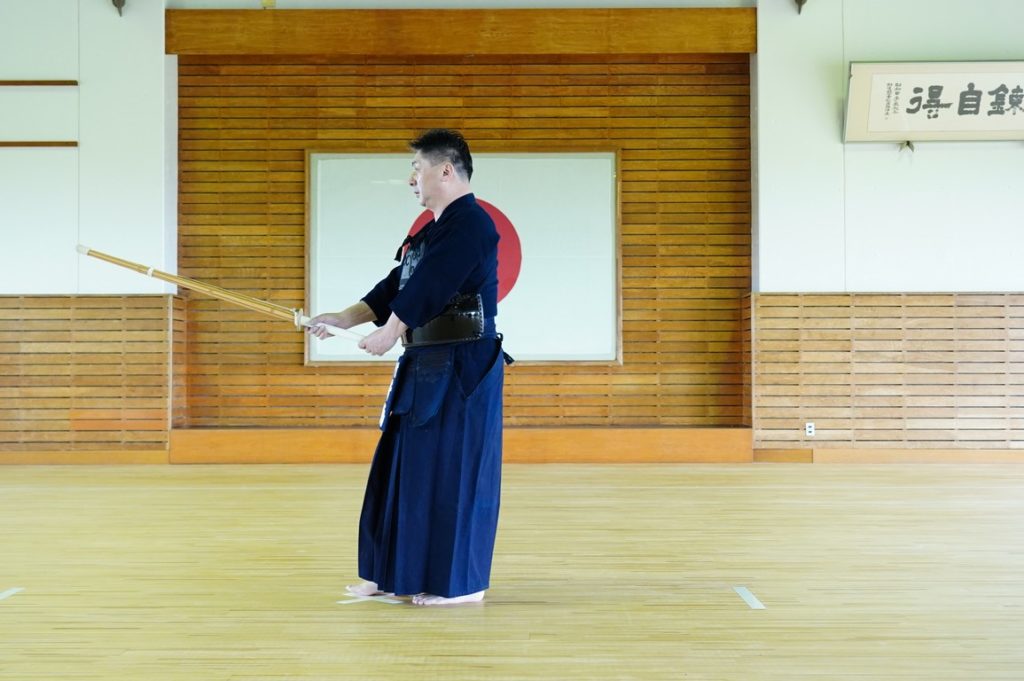
In Kendo, they say “Ichigan Nisoku Santan Shiriki” (First eyes, second legs, third courage, fourth strength), so the legs are very important. The right foot is the main foot to apply Seme and the left foot goes in for the strike.
The typical one-man practice is Suburi, which also requires you to make large steps. This is where the role of the lower body becomes important. It is said that to strike an opponent, you must have a close Maai to them and a far Maai from them. In order to achieve this, you must have footwork with effective Seme.
Footwork is a way to move around while striking or dodging your opponent. Footwork is the basics of basics and we can learn various techniques only when we learn proper footwork.
There are four types of footwork in Kendo: Ayumi-, Okuri-, Tsugi-, and Hiraki-ashi. It is well known that Okuri-ashi is the one most commonly used, but now that we have more time for solo practice, it is the perfect time to review all four types of footwork. The use of the Hiraki-, Tsugi-, and occasionally Ayumi-ashi can change the rhythm of your strikes. If you can use any of the four foot movements at your will, you can expand the scope of your Kendo.
Tsugi-ashi
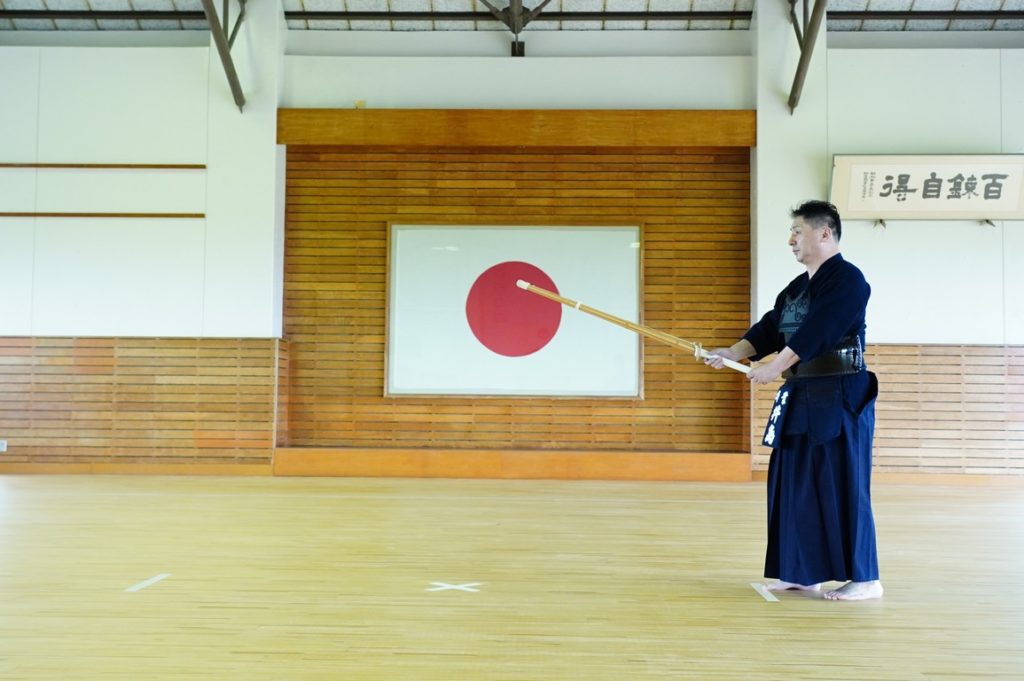
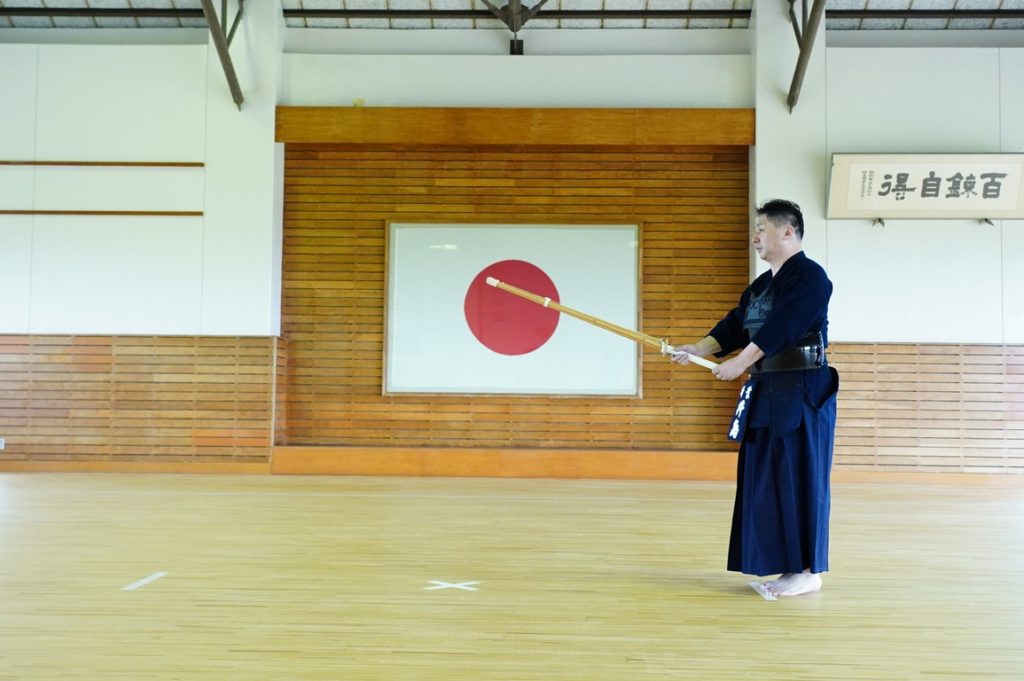
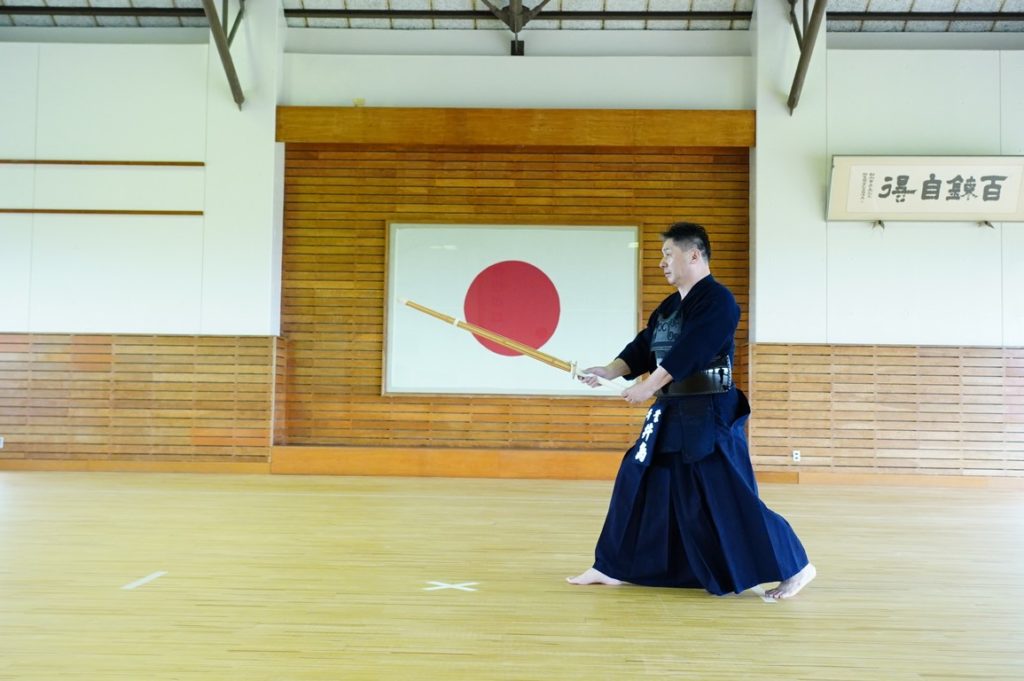
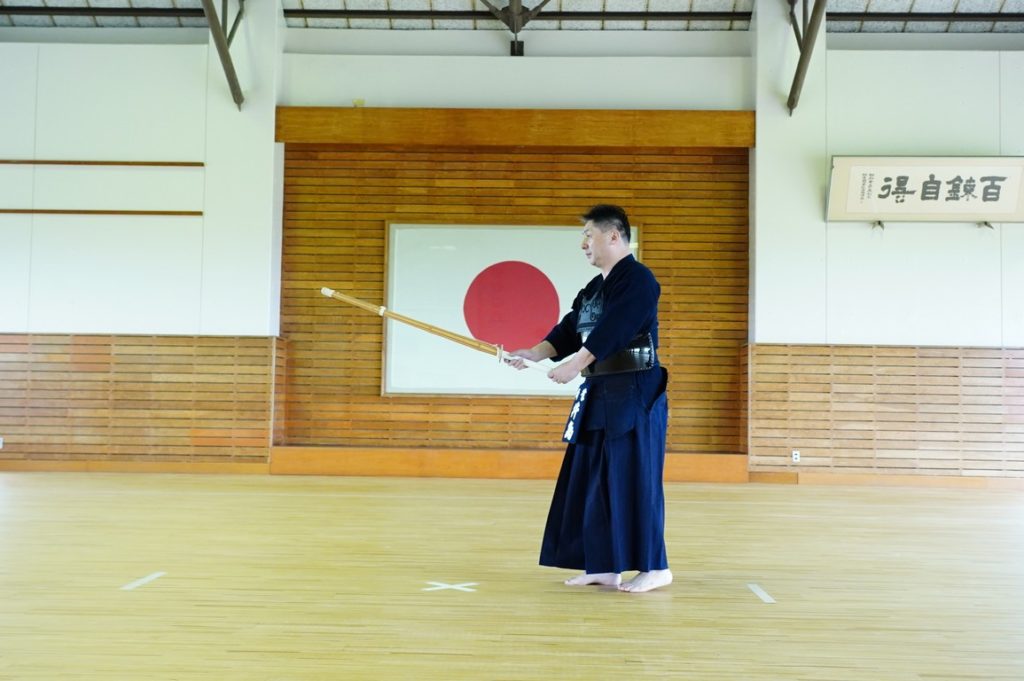
Hiraki-ashi
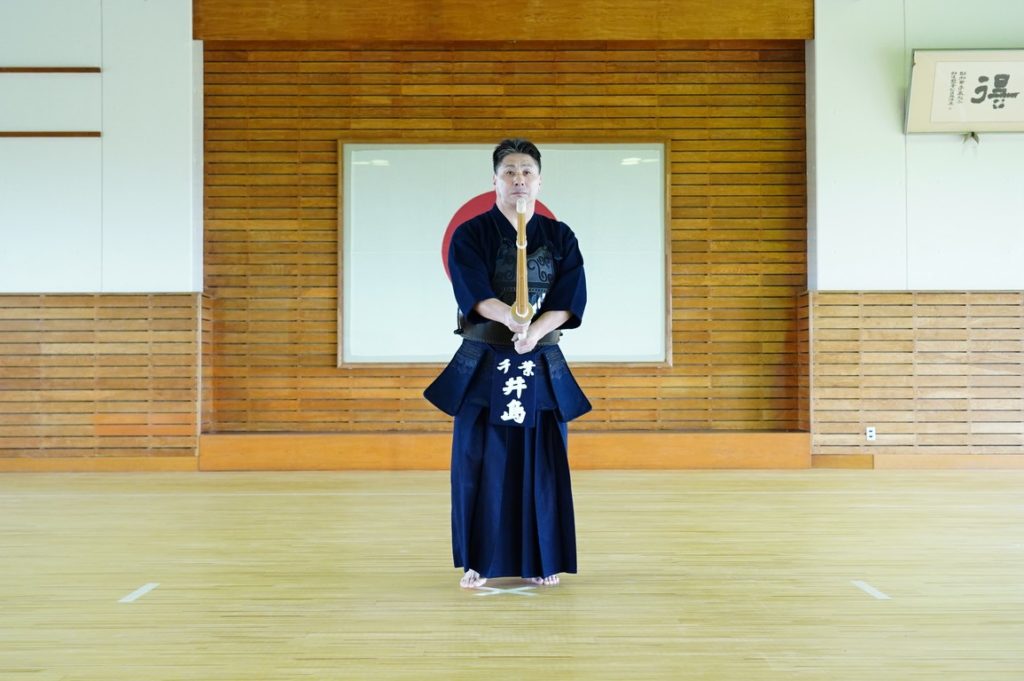
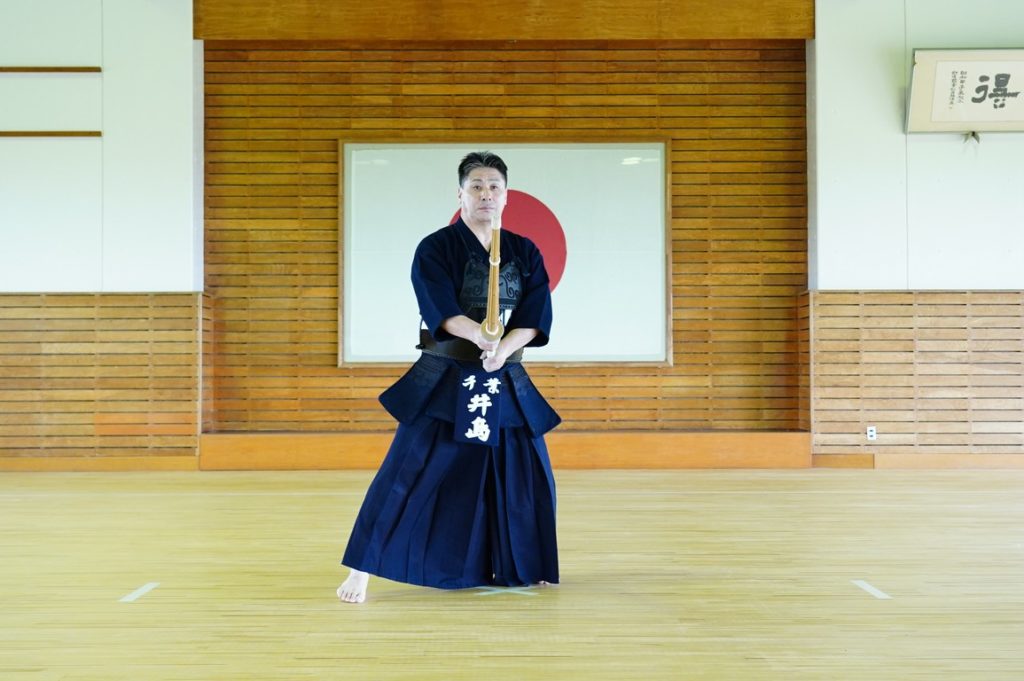
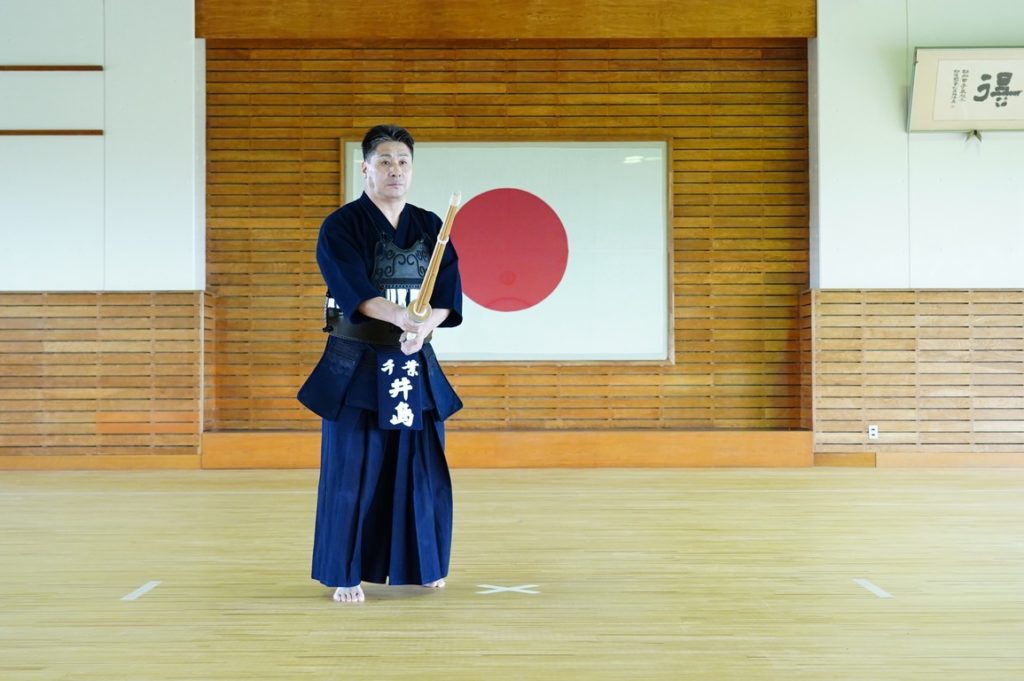
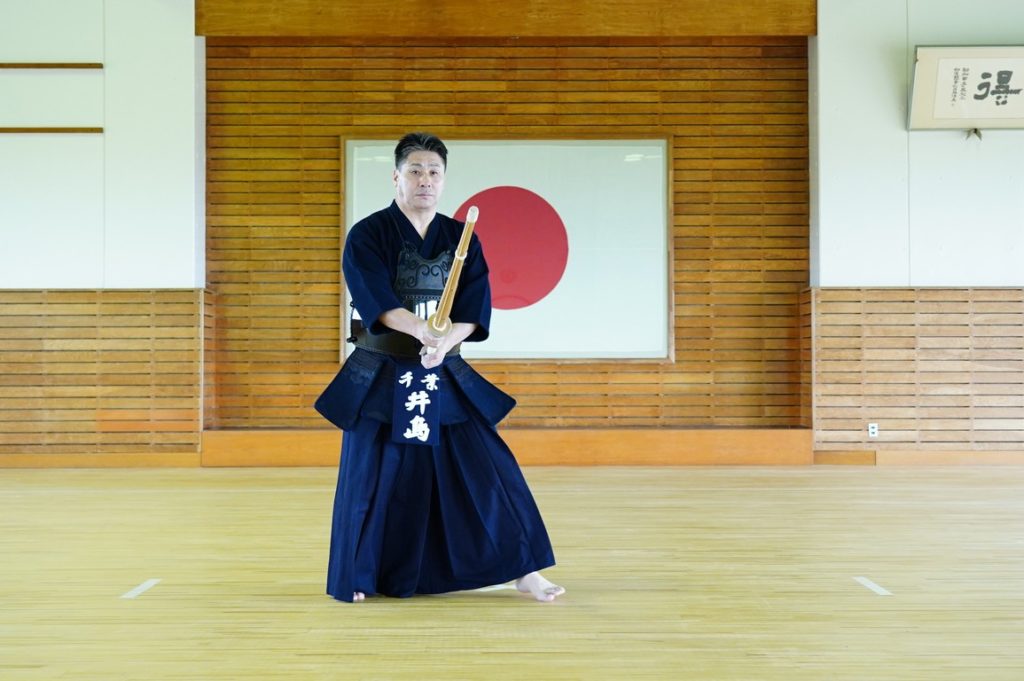

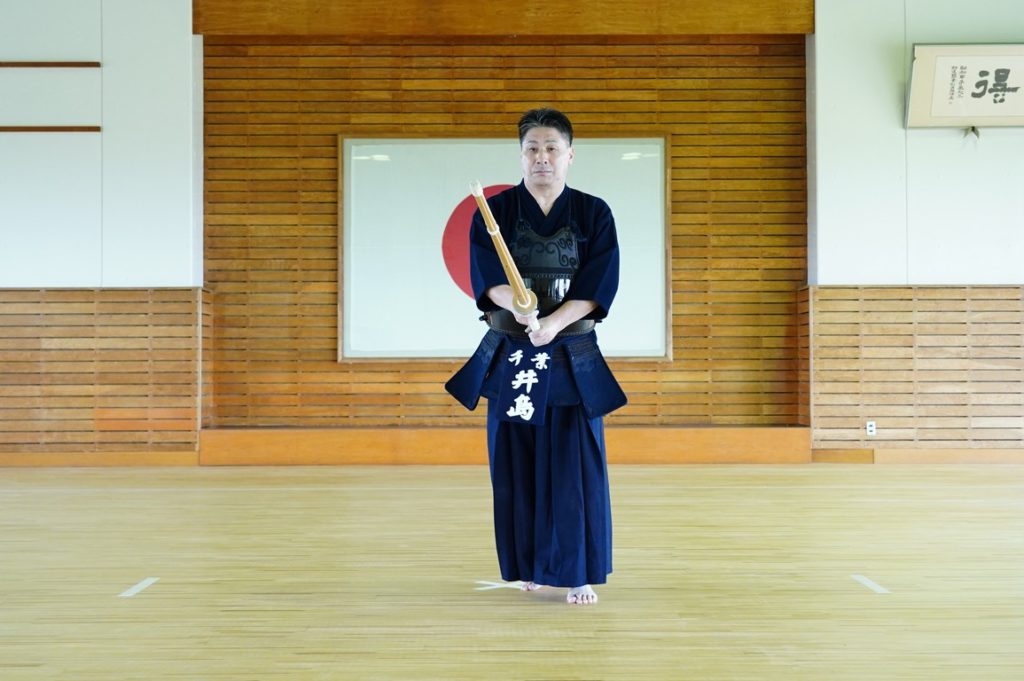
Okuri-ashi is the most commonly used footwork in Kendo, and is used to quickly and sharply close the distance between you and your opponent when the Maai is short already, or to connect to a strike. You step out with one foot in the direction of movement and immediately pull the other foot up to maintain the basic Kamae of the feet at all times.
The rest of this article is only available for Kendo Jidai International subscribers!



